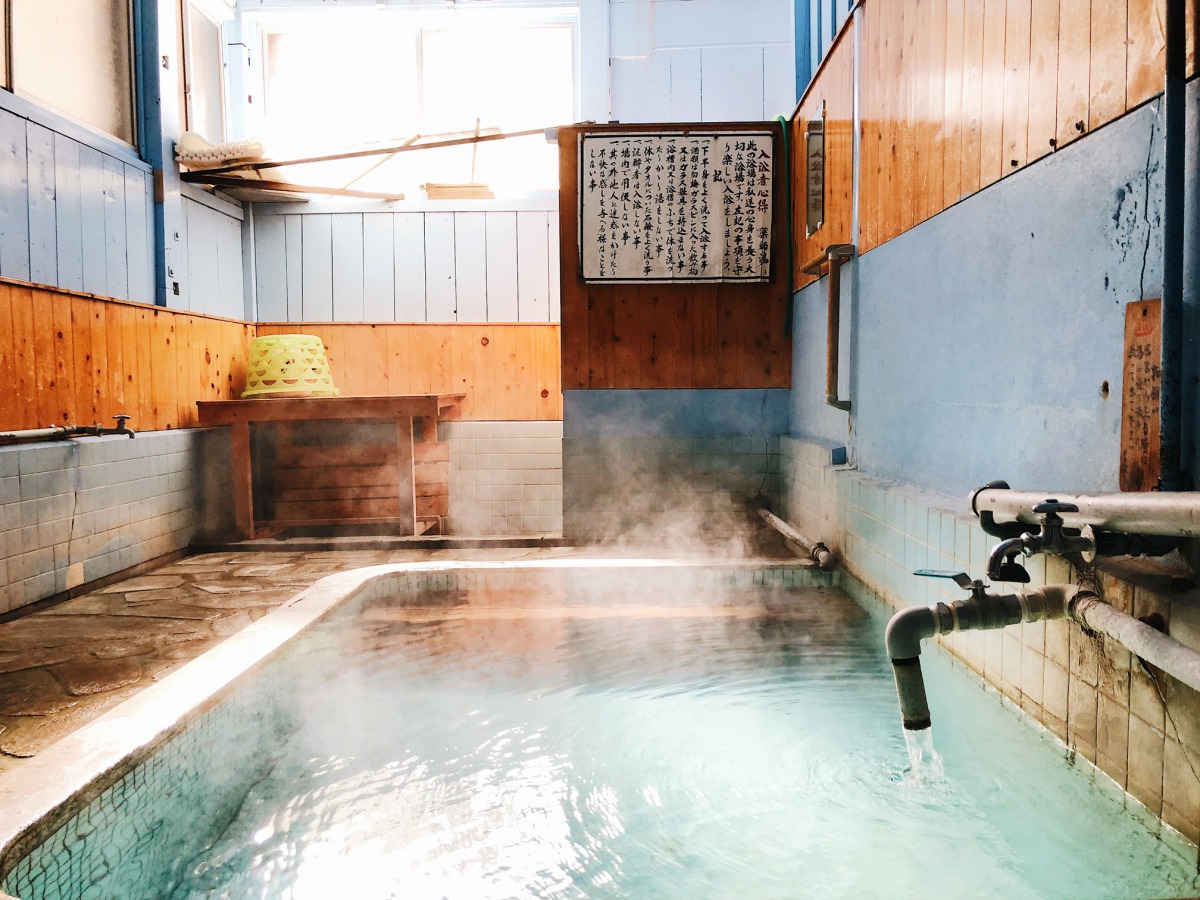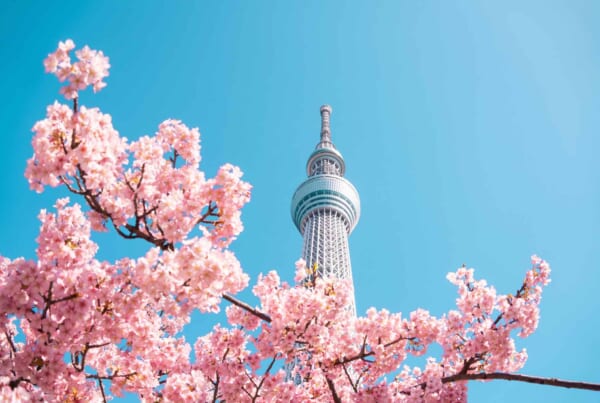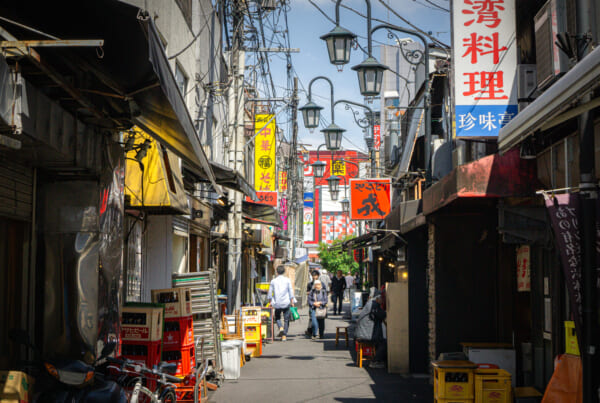Located in the northern part of Kumamoto Prefecture, Tsuetate Onsen is recognized primarily for its therapeutic virtues. Tsuetate, short for “tsue wo tateru” means “leave your cane behind you”. Indeed, the legend says that a visitor helped with a cane, was able to leave the village walking properly, as the quality of the baths did him good. Fact or fiction? It isn’t easy to find the answer. One thing is certain, Tsuetate is home to a special atmosphere.
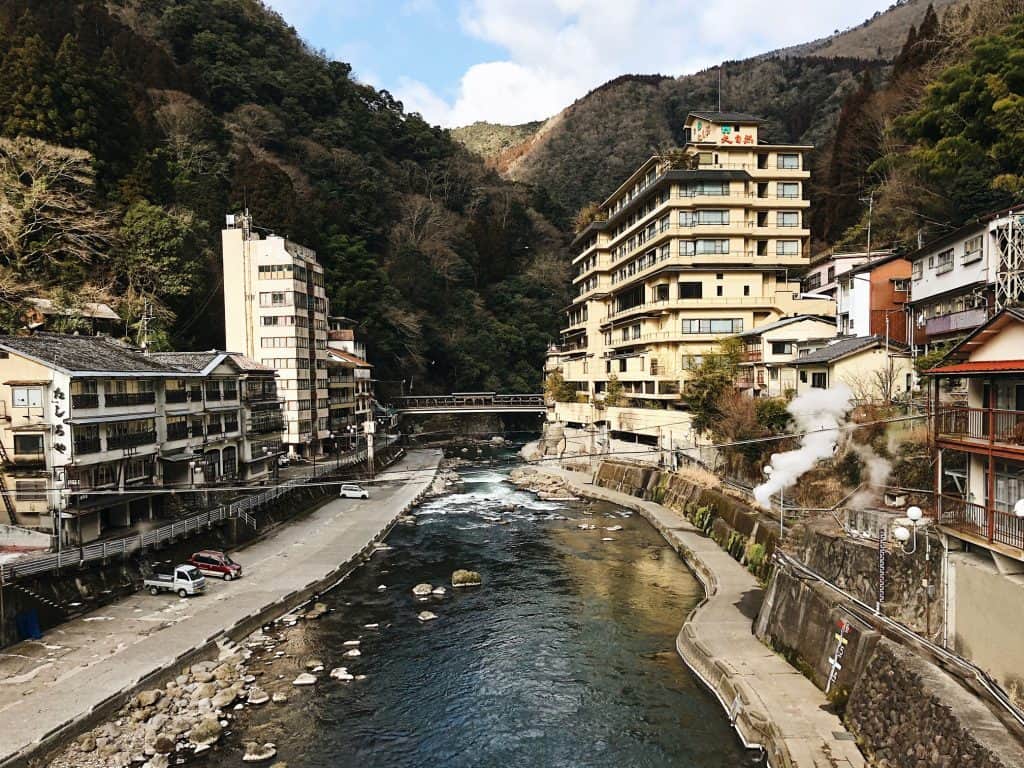
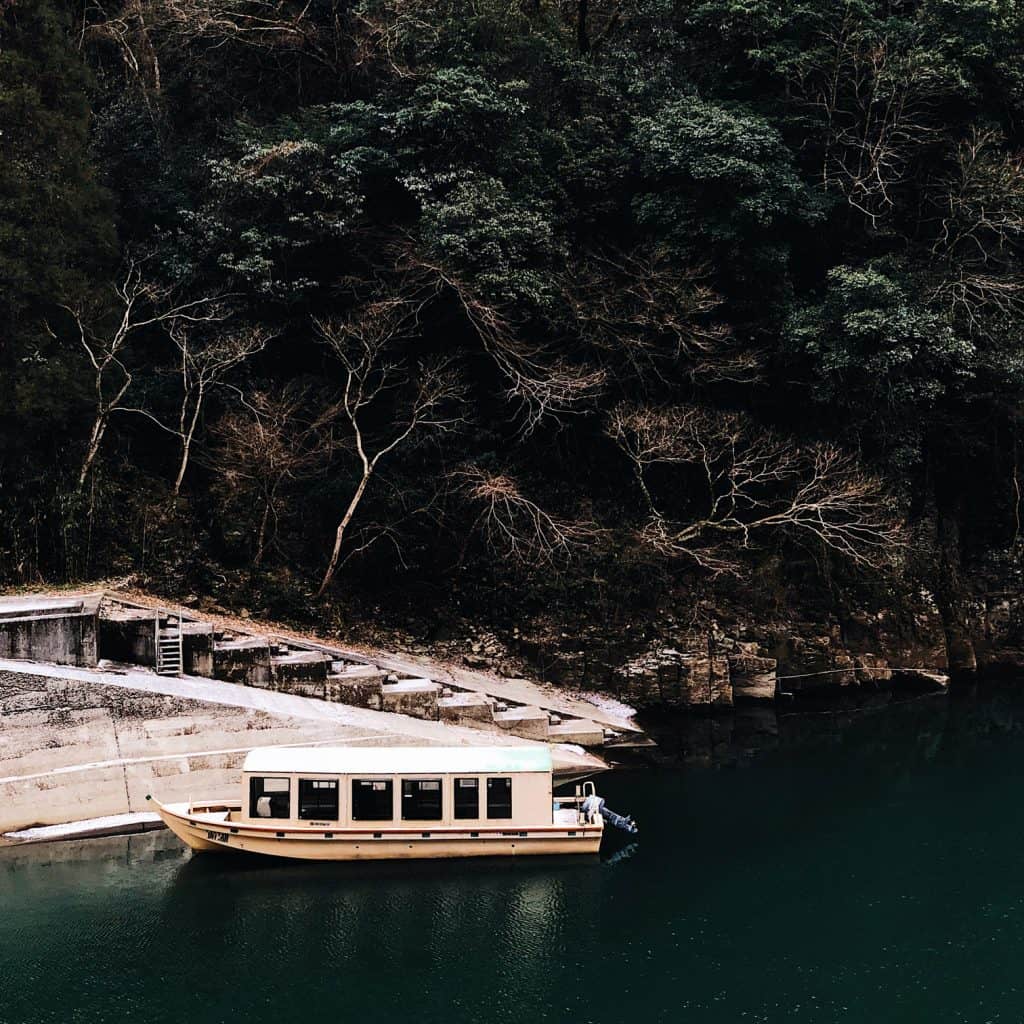
The history of Tsuetate Onsen goes back more than 1800 years – a place steeped in history and experience, which is felt immediately. Getting off the bus, I walked for a few more minutes to reach Tsuetate, I had the chance to cross a bridge whose magnificent view overlooked a small boat, parked near the shore.
A Village Built along the River
The advantage of arriving on foot from outside the city is that you realize what a spa village really is. All the houses and businesses run along the river. The streets overlap each other to be at the heart of the source. Every year, from April 1 to May 6, it is possible to attend the Koinobori festival. You will see many colorful carp hanging above the Mayakawa River.
Without even knowing where to go, I walk quietly in the small streets. Life seems so peaceful, and calm. The songs of birds intertwine with the sound of the river as the sun rises through the clouds. Surrounded by mountains, security and serenity reign.
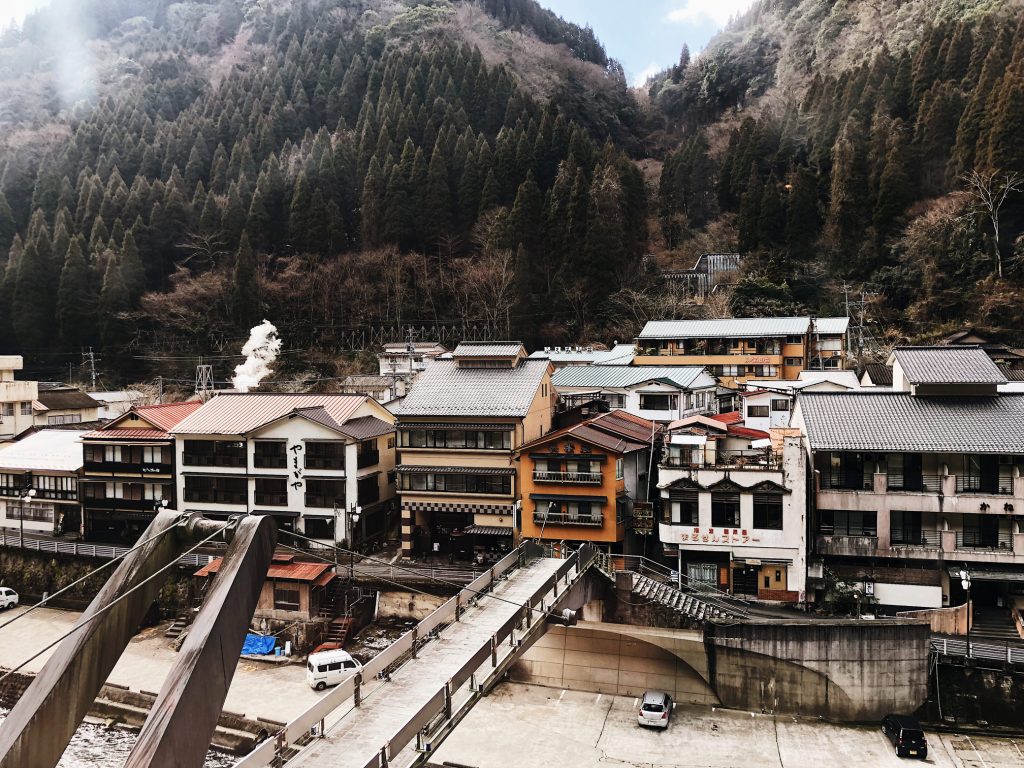
This beautiful onsen town is surrounded by mountains
Active Therapeutic Sulfur
In the streets of Tsuetate Onsen, this particular smell wanders with the wind: sulfur. The sulfurous baths, known for their therapeutic virtues, have effective curative properties against skin conditions, as well as muscular and rheumatic pains. If you are looking for a place to do this activity, be aware that there are many in the village. So you can inquire at Tsuetate Onsen tourist office, which is located next to the bus stop, or you can go on your search by exploring the hidden corners.
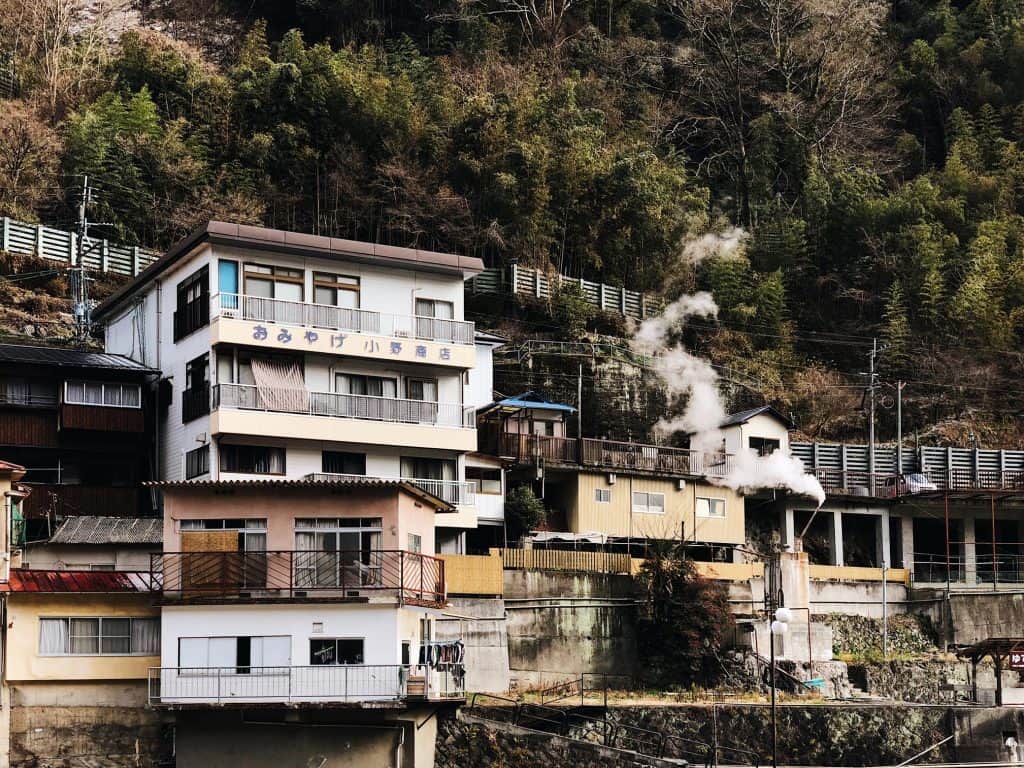
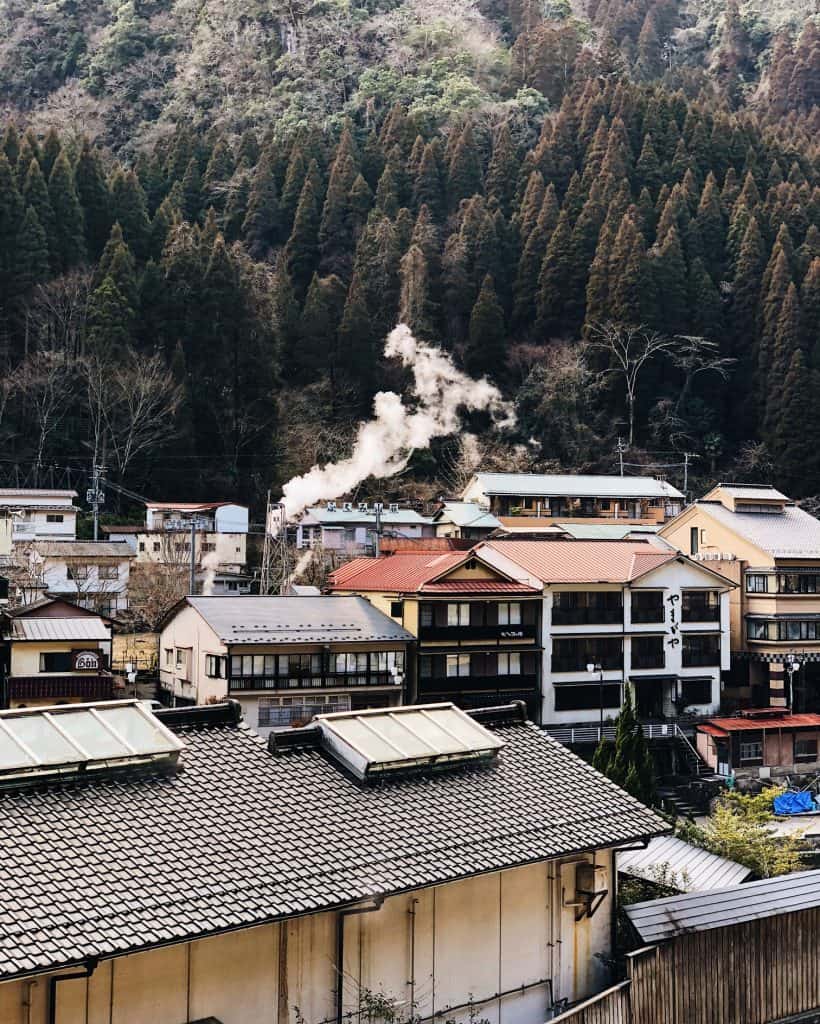
Tsuetate’s Hidden Onsen
As I continued my walk along the river, I came across an intriguing door, releasing a lot of steam. Curious, I decide to enter. On the other side, a cat was sleeping on the floor; this was the entryway of a small onsen. However, nobody was there to welcome me, or even make me pay. Indeed, a peculiar aspect of villages like this one is that you can find baths so small and intimate, that you will pay the entry fee of 200 yen by sliding your coins in a small box, located at the entrance. Once undressed, I pass the second door and find myself in the main room. Always alone, the bath is mine. Once finished, I leave the room through the back door, finding myself again at the foot of the river.
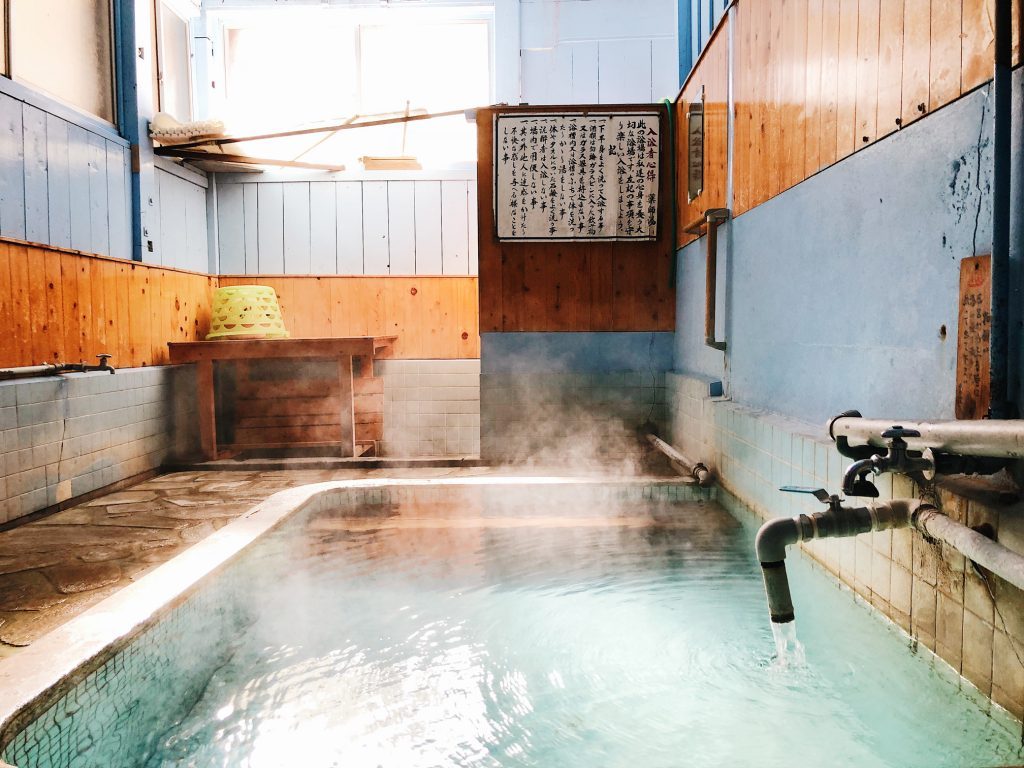
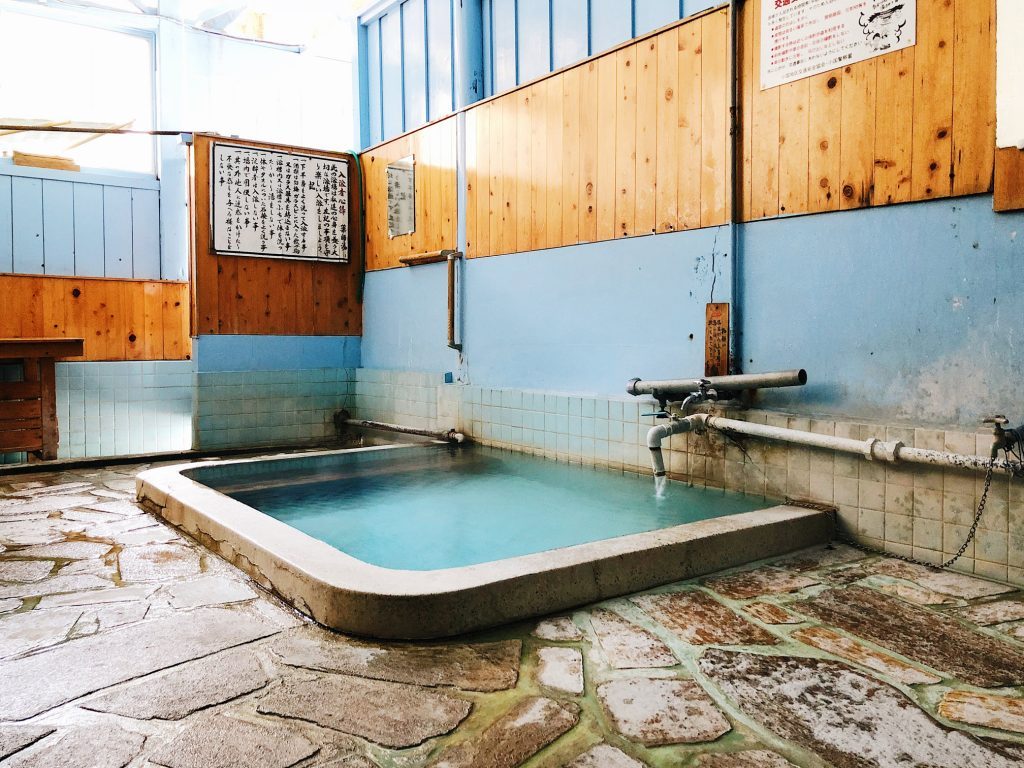
Sedoya and Surroundings
After reinvigorating myself in the onsen, I crossed the bridge to reach one of the most charming areas of the city: Sedoya Street. In reality, this street mingles with the other adjacent streets. It is a very quiet neighborhood where local businesses and homes coexist, in narrow streets that become increasingly smaller. You can see all kinds of scenes from everyday life, from an old man who gardens to a little child on a bike.
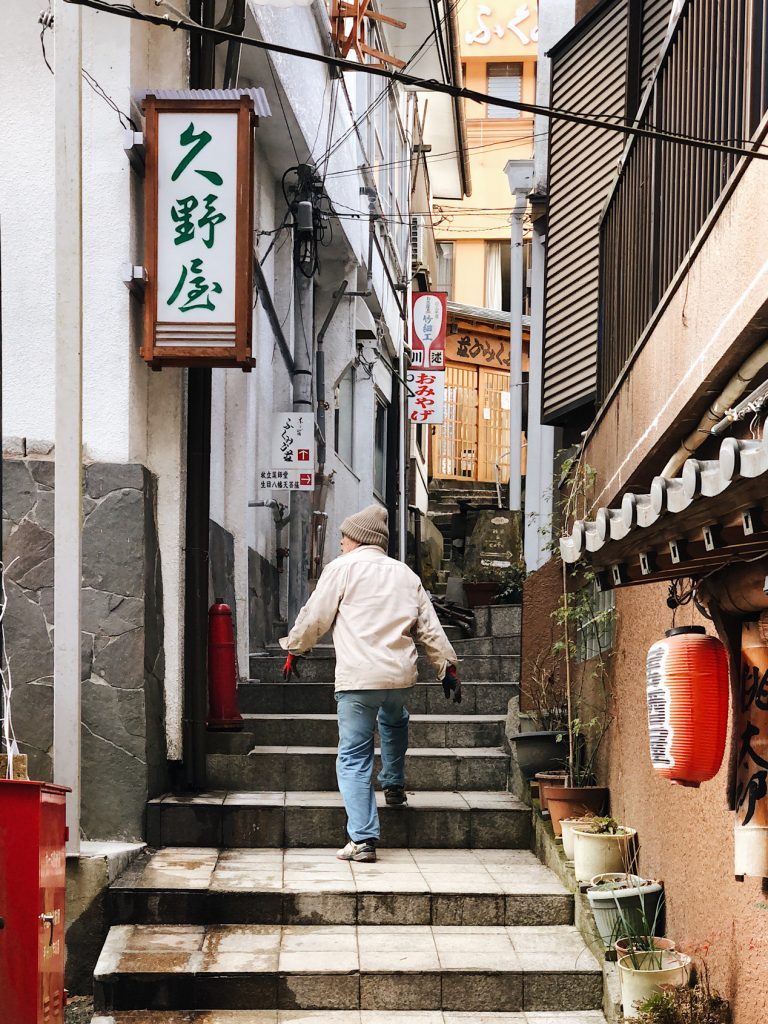
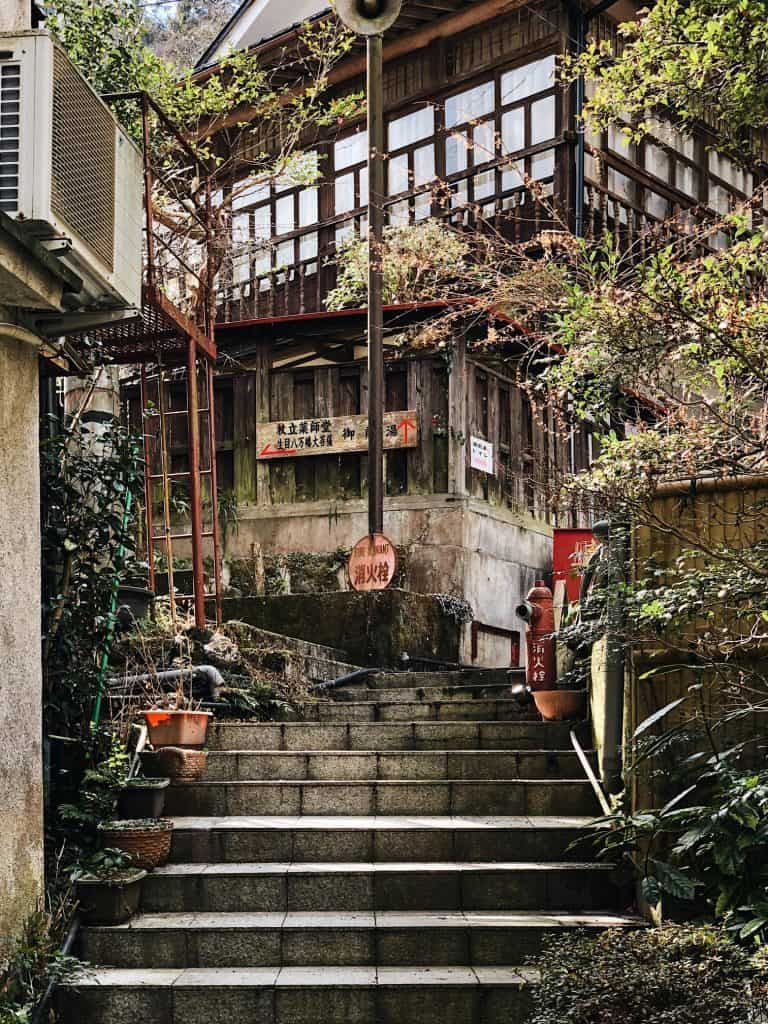
The authenticity that emerges from this neighborhood reminds me of Venice, where colorful houses, flowerpots, and shutters are the charm of a whole city. In Tsuetate, the old Japanese signs overlook the streets, while all kinds of everyday objects blend into the urban setting.
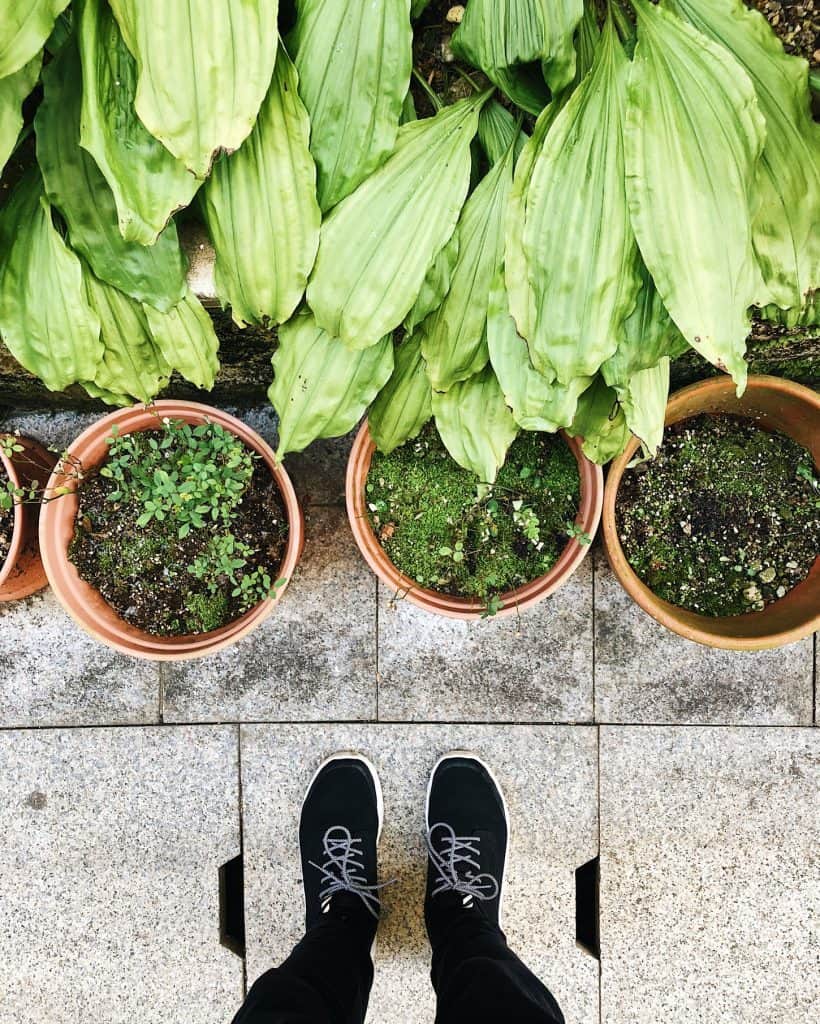
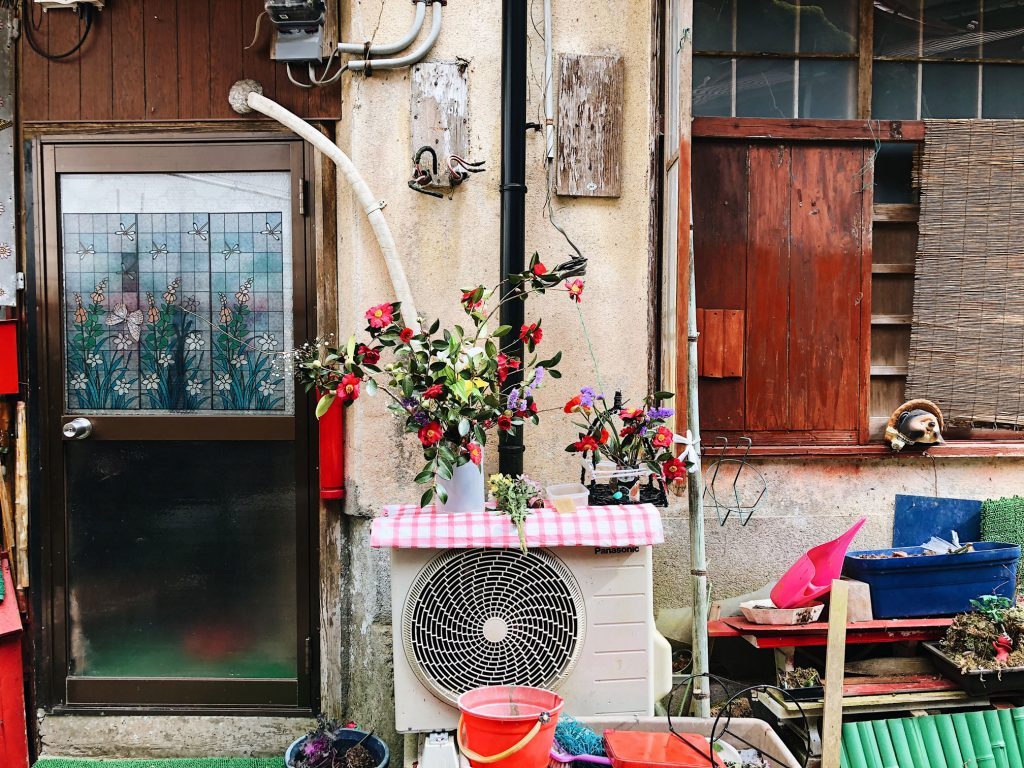
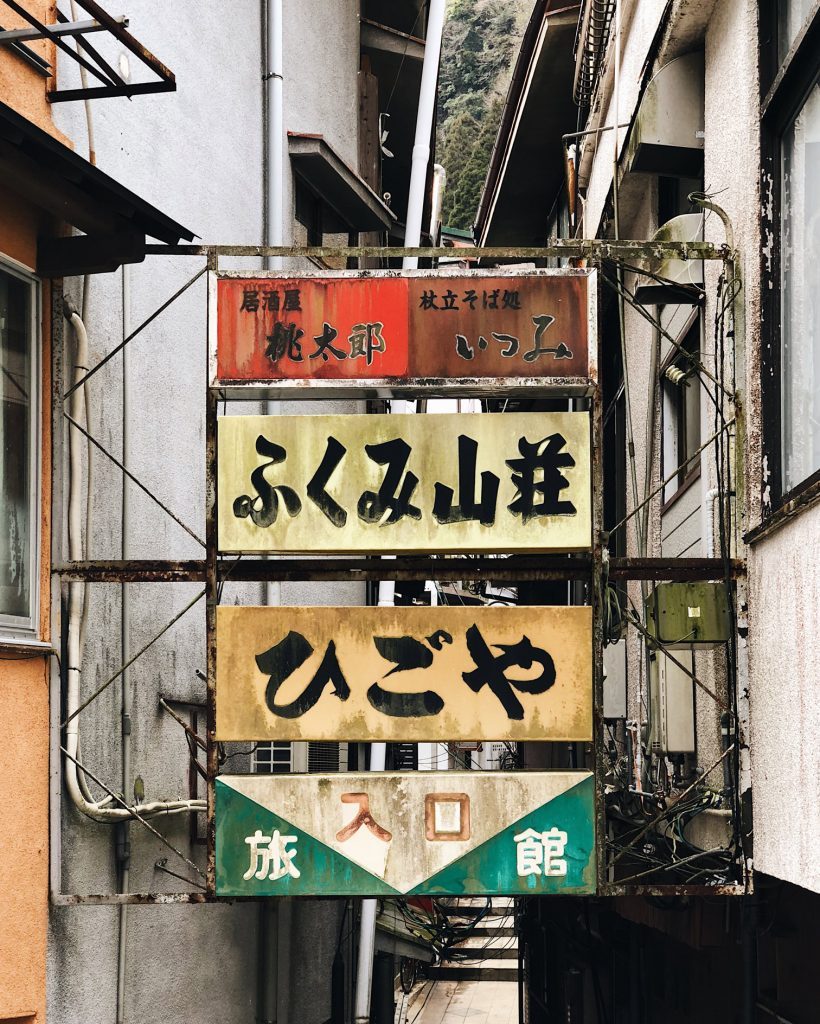
Warm up at “P Hole”, Local Tsuetate Coffee
[This café is closed]
Although the village was particularly quiet and difficult to meet someone during this season, I wanted to try a typical village trade. The direction of the coffee P Hole, a large building built at the foot of the Shikabashi bridge. Once the door is open, I find myself in front of a charming little spiral staircase, which leads to the café upstairs. At the top, I discover a large room with a high ceiling, illuminated by a large bay window with breathtaking views of the river. An old lady drinks tea while chatting with the waitress.
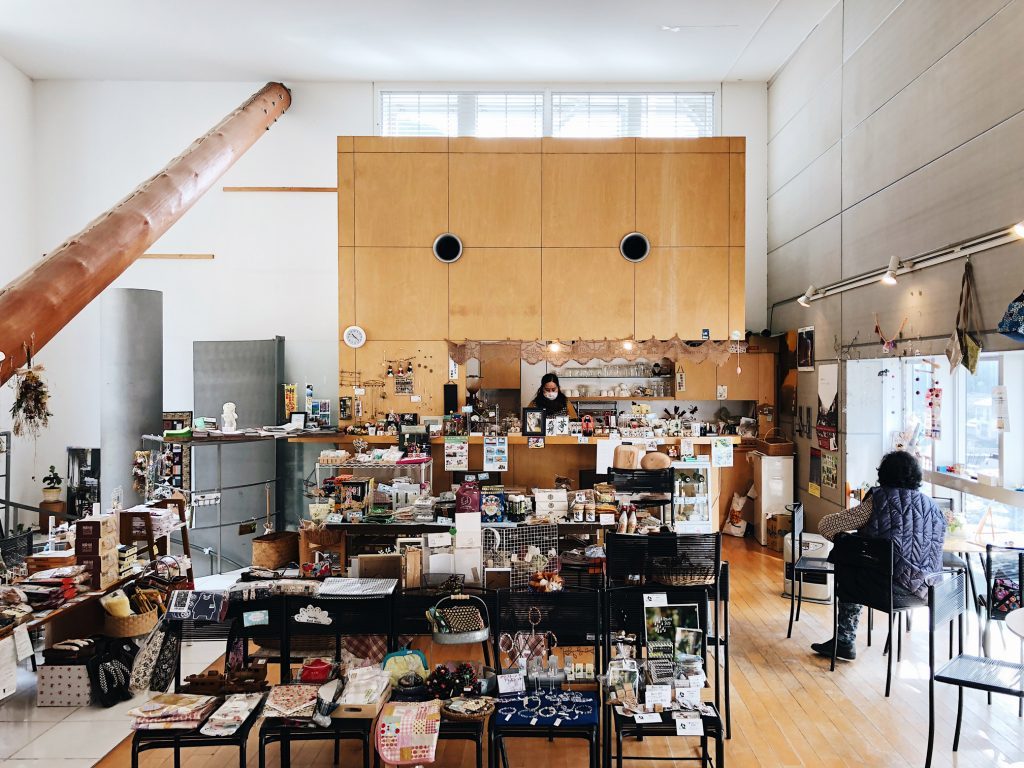
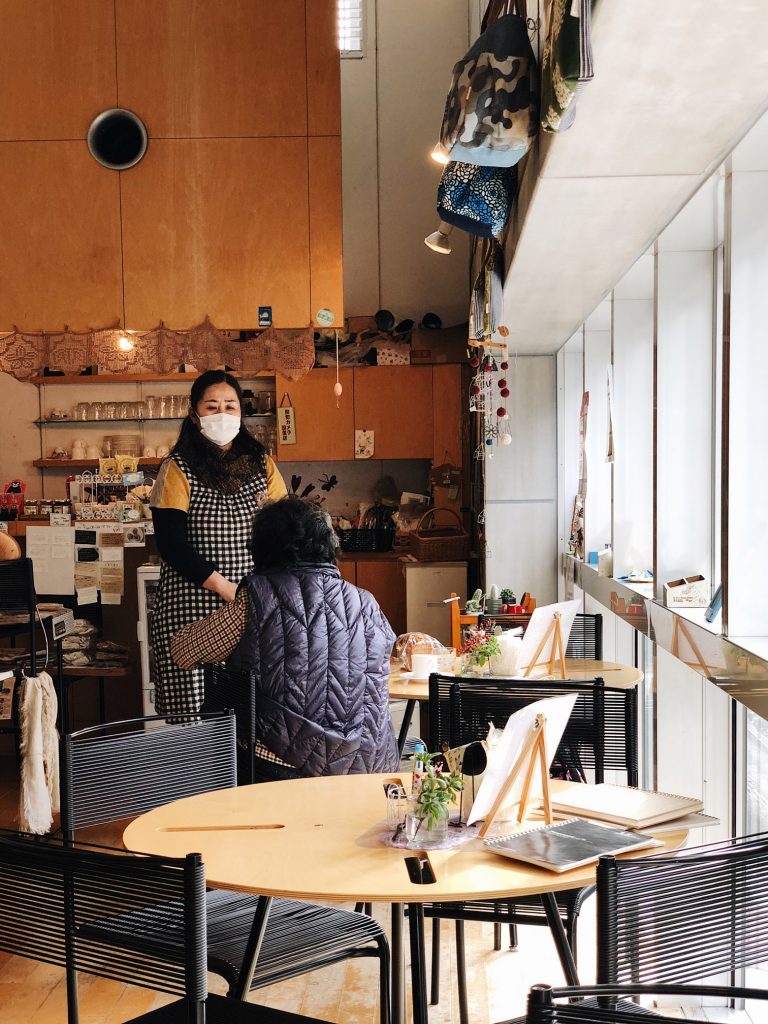
I was pleasantly surprised to be greeted and served in English, something relatively rare in Japan and even more so in the remote provinces of the capital. While warming up with a signature “P Hole” coffee from the house, I take the opportunity to participate in a tour of the trade. Which also offers a variety of small local souvenirs from a plush of Kumamon, the official mascot of the region, to retro notebooks. I finish my coffee while admiring the view of the river and the village of Tsuetate, before leaving a little later.
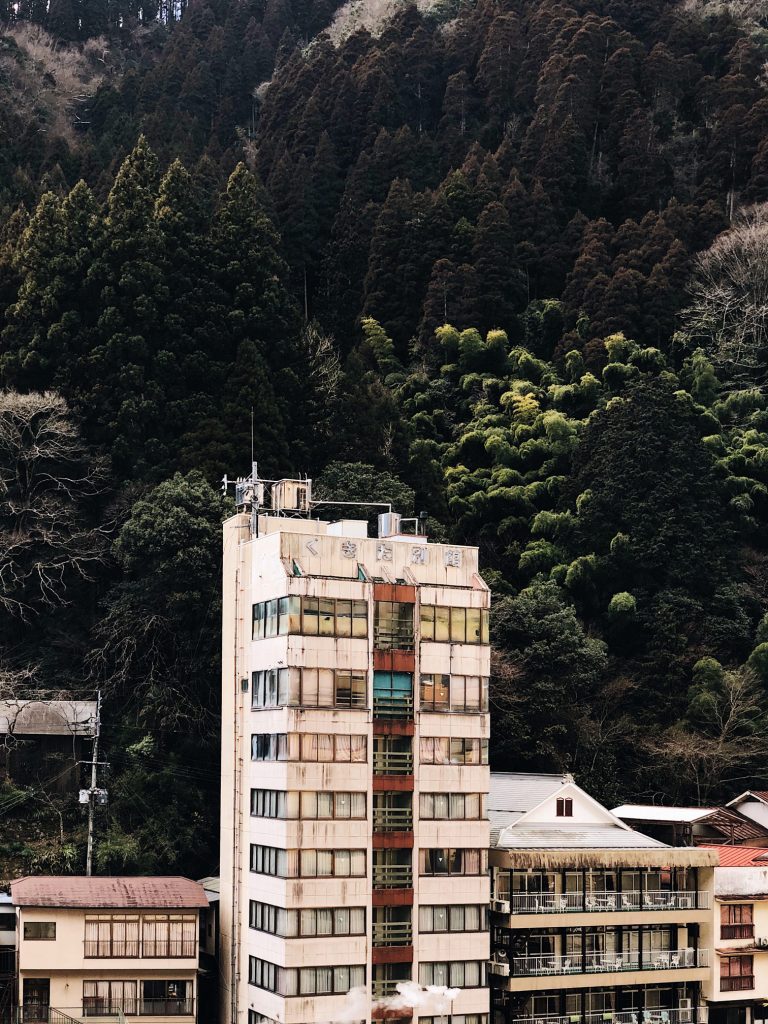
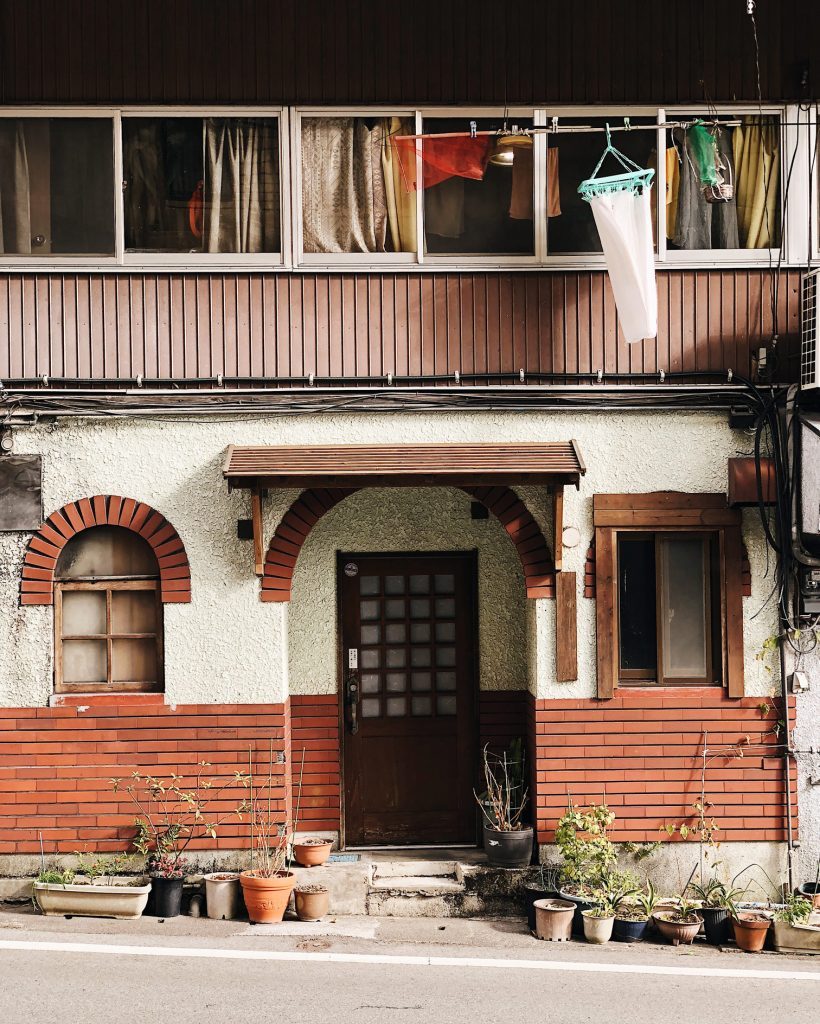
Sponsored by Kumamoto Prefecture Tourism Federation


